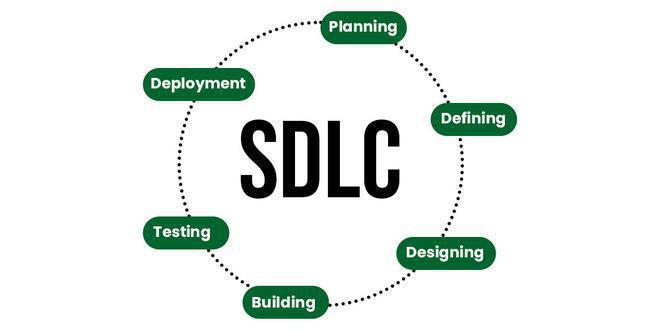In today’s fast-paced digital landscape, the quality of software development has emerged as a pivotal component in determining an organization’s success. As businesses increasingly rely on technology to drive operational efficiency and foster innovation, the significance of code quality cannot be overstated. High-quality code not only ensures robust application performance but also enhances maintainability, scalability, and overall user satisfaction. In this article, we will explore best practices that can elevate code quality within your development teams. From adopting agile methodologies to implementing comprehensive testing protocols, these strategies are designed to empower software developers and engineers to produce reliable, efficient, and secure code. By embracing these best practices, organizations can not only mitigate risks associated with software failures but also position themselves as leaders in the competitive tech landscape. Join us as we delve into actionable insights that can transform your approach to software development and drive lasting value for your business.
Table of Contents
- Understanding Code Quality and Its Impact on Software Development
- Key Principles of Clean Code for Sustainable Development
- Implementing Effective Code Review Processes to Foster Collaboration
- Leveraging Automation and Tools for Continuous Integration and Testing
- To Wrap It Up
Understanding Code Quality and Its Impact on Software Development
Code quality is a critical component of successful software development, impacting not only the functionality of an application but also its maintainability, scalability, and overall performance. High-quality code enables developers to efficiently collaborate on projects, reducing the time spent on debugging and reworking. It also fosters an environment where new team members can onboard more rapidly, promoting knowledge sharing and a streamlined development process. To achieve high standards of code quality, teams must adhere to best practices that advocate for clear coding guidelines, proper documentation, and thorough testing procedures.
Several factors contribute to enhanced code quality, such as adherence to coding standards, regular code reviews, and the implementation of automated testing. Consider the following best practices:
- Consistent coding standards: Following a set of guidelines helps maintain uniformity and clarity across the codebase.
- Code reviews: Engaging peers in the review process can catch potential issues early and promote knowledge sharing.
- Automated testing: Implementing unit tests and integration tests allows for quicker identification of bugs and ensures that changes don’t compromise the system.
By prioritizing code quality, organizations not only mitigate risks associated with technical debt but also pave the way for innovation. A well-structured codebase is more adaptable to change, allowing teams to respond proactively to shifting market demands. The below table outlines the benefits of focusing on code quality:
| Benefit | Description |
|---|---|
| Reduced bugs | Higher quality code leads to fewer defects in production. |
| Increased efficiency | Well-written code reduces the time developers spend debugging. |
| Scalability | Quality code allows applications to adapt to growth and changes easily. |
Key Principles of Clean Code for Sustainable Development
To achieve high code quality, embracing a set of essential principles can greatly enhance the sustainability of software development. Readability is paramount; code should be clear and understandable to facilitate collaboration among developers. Another crucial principle is modularity, where functions and classes are designed to perform specific tasks. This promotes reusability and simplifies testing and maintenance. Additionally, following the principle of consistency in naming conventions and formatting allows teams to navigate the codebase more easily, reducing the learning curve for new members.
Another significant tenet is refactoring, which encourages continuous improvement of existing code without changing its external behavior. This practice helps maintain efficiency and adaptability, addressing technical debt over time. Furthermore, prioritizing automated testing ensures that code changes do not introduce new bugs, thus preserving long-term stability. Maintaining clear documentation is vital; it aids in understanding the purpose and functionality of code, especially as teams evolve. By adopting these principles, developers can create sustainable codebases that are not only resilient but also adaptable to future requirements.
Implementing Effective Code Review Processes to Foster Collaboration
Establishing a structured code review process is essential for fostering collaboration among team members and enhancing overall code quality. To begin with, it’s crucial to define clear guidelines that outline what aspects of the code should be reviewed. This ensures that every team member is on the same page and helps maintain focus during the review process. Effective practices include:
- Encouraging constructive feedback instead of critical comments.
- Setting a maximum size for code reviews to keep them manageable.
- Utilizing tools that facilitate asynchronous reviews, allowing for greater flexibility in collaboration.
Moreover, integrating regular team discussions or meetings specifically to go over code review findings can greatly enhance communication and cohesion. These meetings can serve as a platform to celebrate successes, address challenges, and share best practices. Another effective strategy is to pair up developers with varying levels of experience for peer reviews, as this can lead to a mutual knowledge exchange and skill enhancement. Consider the following table to highlight the benefits and strategies of a robust code review process:
| Benefits | Strategies |
|---|---|
| Improved Code Quality | Define clear guidelines for code review. |
| Knowledge Sharing | Pair up experienced and less experienced developers. |
| Enhanced Team Collaboration | Conduct regular discussion meetings on code reviews. |
Leveraging Automation and Tools for Continuous Integration and Testing
In the fast-paced world of software development, automation and tools play a pivotal role in ensuring continuous integration and rigorous testing practices. By implementing tools such as Jenkins, Travis CI, and CircleCI, teams can achieve consistent builds and enable rapid feedback loops. Such automation not only reduces the time taken to integrate changes but also increases the reliability of code by catching issues early in the development cycle. Key benefits of leveraging these tools include:
- Faster Release Cycles: Automated processes facilitate frequent deployments, enabling quicker iterations.
- Improved Collaboration: With a centralized system, teams can work more cohesively, focusing on code quality rather than integration challenges.
- Enhanced Code Quality: Automated testing ensures that every integration is verified against a suite of tests, leading to fewer defects in production.
Furthermore, adopting a comprehensive set of testing methodologies, including unit tests, integration tests, and end-to-end tests within the CI pipeline, can significantly bolster software robustness. The integration of tools like Selenium for browser testing or JUnit for Java applications can streamline the testing process, making it part of the continuous integration workflow. Below is a brief comparison of some commonly used testing frameworks:
| Testing Framework | Language | Type |
|---|---|---|
| JUnit | Java | Unit Testing |
| Selenium | Multiple (Java, Python, etc.) | UI Testing |
| PyTest | Python | Unit and Integration Testing |
By investing in the right automation tools and establishing a solid testing framework, organizations set themselves up for success, ensuring that code quality remains high throughout the development process.
To Wrap It Up
enhancing code quality is not merely a technical necessity; it is a strategic imperative that fosters sustainable growth and innovation in software development. By adopting the best practices outlined in this article—ranging from rigorous code reviews and comprehensive testing to the implementation of coding standards and continuous integration—you empower your development team to produce robust, maintainable, and high-performing software. Prioritizing code quality ultimately translates into improved user satisfaction, reduced time-to-market, and minimized long-term costs, positioning your organization to thrive in a competitive landscape. As you embark on this journey, remember that the commitment to quality is a continuous process and a shared responsibility among all stakeholders. Embrace these practices today to build a resilient foundation for tomorrow’s technological advancements.






